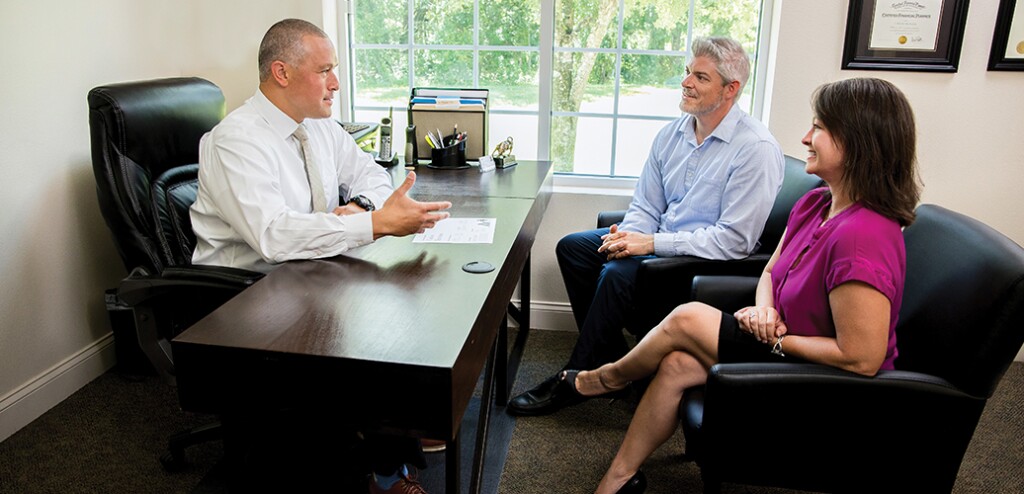While no two homes are exactly the same, neither are the journeys of home buyers. How you get from the open house to the housewarming party is unique to your financial needs and your comfort level.
“Not everybody’s situation is the same, but there are some things everyone should look for during the home-buying experience,” says Jeremy Seldon, vice president of Residential Real Estate for Thrivent Credit Union. “That starts with a team that will guide you and focus on what’s most important to your needs and wants. The monthly payment is most important because it needs to align with your monthly budget and various other financial goals that you want to accomplish.
Planning on buying a home? Here’s what you should consider.
Intentionally choose your team
Unless you already have a realtor you know and trust, it’s best to start your home buying journey by talking to a representative from a mortgage lender. Why? They’ll be able to walk you through the process of buying the home you want. Plus, a lender will be more focused on your ability to pay your mortgage rather than the cost of the property.
“I would recommend you talk to a lender and get educated on what a mortgage looks like. This allows you to understand the full qualifying process, which can differ from actual costs of owning the home,” Seldon says. “You’ll also want to talk to a financial advisor in advance about what makes sense based on your other financial goals.”
I would recommend you talk to a lender and get educated on what a mortgage looks like. This allows you to understand the full qualifying process, which can differ from actual costs of owning the home.
Decide what you’re comfortable paying
Beyond lenders’ standard underwriting guidelines, there’s no secret behind determining what home you can and cannot afford. It all comes down to what you’re comfortable with financially.
Karen Gajeski, senior vice president of Mortgage Banking with Thrivent Credit Union, says to look at the past three months of your bank statements to review income and expenses, including committed debt payments, to see what you can free up for a mortgage payment.
Seldon asks clients to start by estimating a monthly payment they feel comfortable with based on their cash flow. Then he asks if he can add $100 to that. Then a little more. Once they say they would not feel comfortable with a payment at a specific level he knows he has reached their top end comfortability level. From there he can establish their top end purchase price. This is often a very different number than the amount for which they are qualified or approved. There is no sense in looking at homes that would not allow you to comfortably make payments when considering your lifestyle and other financial goals. You want to pay attention to the number you are comfortable paying not what you may be able to be approved for.
“I’ll find out where [an applicant’s] ceiling is on their comfortability. And once I’ve found their ceiling … that’s where I’ll start,” he says. “Then we can back into a mortgage and then a top end purchase price. If they know their top end and they end up finding a home lower, they will only improve their overall financial position and cashflow from there.”
There are other factors to consider. First, what are your goals? Your income may change or be allocated elsewhere if you foresee a career change or promotion, or if you want to grow your family. Plus, your total payments will be based on things like your interest rate, taxes, insurance and the length of your mortgage, traditionally 15 or 30 years.
Consider these 6 money moves
1. Grow your savings
A common mortgage myth is that 20% is required for a down payment, but it’s not a deal-breaker. Many save to get to the 20% down payment and once in their new home their savings have now been depleted to have toward unexpected expenses. Seldon says.
Speaking with a mortgage lender will help you determine the best down payment savings goal for you, the differences the amount of down payment will make on your mortgage loan. Down payments could be as little as 3%. Achieving the highest down payment will require regular or automated saving and possibly cutting back unnecessary expenses. Talk with your Thrivent financial advisor about shorter-term saving and investment strategies.
2. Know your credit score
In short, if you have an average
If you need advice on managing your credit score or debt, nonprofits like the National Foundation for Credit Counseling, plus the bureaus themselves, can help you.
3. Prepare to sell your home
If you’re selling a home to buy a new one, Gajeski says finding a realtor you trust and who is knowledgeable about your neighborhood will be key to walking you through the process and getting true-to-market value for your home. Also, you should expect to give up roughly 7% to 10% of your home’s value through realtor fees, closing costs, deed transfer and other fees when it sells. Because of that, minimizing the number of times you sell can be financially advantageous for you over the course of time.
4. Compare interest rates
Today’s
5. Decide fixed vs. adjustable
Whether you want a fixed-rate mortgage or an adjustable-rate mortgage (ARM) comes down to factors like how long you plan to have the loan. For example, if your home is a shorter-term purchase or you plan to pay off the mortgage quickly, an ARM may have a lower introductory interest rate.
6. Look at taxes
Mortgage interest may be written off in your taxes, Gajeski says, but that isn’t going to be useful for home buyers filing with a standard deduction. Talk with your Thrivent financial advisor and a tax accountant on factoring in property taxes or tax strategies into your financial plan.
Make your offer competitive
The market is still competitive in a higher rate environment as there is a lower inventory of homes being sold. Therefore, ensure you are qualified and can make a strong offer based on those qualifications, which will aid the seller in accepting your offer.
Seldon strongly recommends getting a pre-approval letter that says you’ve been pre-approved for a home loan.
“It’s going to set you up to make a strong offer because the seller wants to know the buyer actually can get a loan,” he says. “Realtors also want to know if their buyers actually can get financing. And finally, it lets the realtor know your upper limit for purchasing a home. You can set your pre-approval dollar amount with your bank if you’ve determined the top amount you are comfortable with.”
If your offer on a new home is contingent on the sale of your current home, that may put you at a disadvantage compared to buyers with noncontingent offers. There are options like a cash-out refinancing that may help you make a cash offer, which is desirable for the seller. To make your offer even more competitive, you may consider giving up some concessions, such as a home inspection contingency. Your realtor can help you with these types of concessions so that you put forth your strongest offer for purchase.
Remember: While navigating the home buying journey takes time, putting in the proper planning will ensure you find a home that’s right for you and your financial plan.
Dos and don’ts for first-time home buyers
- Do get pre-approved. A pre-approval letter from a mortgage lender will boost the chances that your offer on a home will be accepted.
- Don’t get hung up on the idea of paying private mortgage insurance (PMI), which is required with a down payment less than 20%. If a huge down payment wipes out all your savings, a smaller down payment actually may be a better financial option to keep emergency savings available. Plus, it’s temporary.
- Do monitor your credit. Your credit score is an important factor in determining interest rates, so keep tabs on it. Be aware that while soft credit inquiries like estimates or pre-approvals do not influence your credit score, more hard credit inquiries, like when you apply for a loan, can have a small impact.
- Don’t forget the adage “location, location, location.” Factors like neighborhood, walkability and views will change over time and significantly affect a home’s price—and resale value.
- Do understand the full financial picture of the loan estimates you receive from a lender by reviewing both rates and fees. It’s best to make your comparisons before starting a loan application. Be cautious of authorizing a credit check too many times, as it will affect your credit score.
- Don’t rush through it. You only can control how much you buy your home for, but not how much you sell it for, which is subject to swings in the market. Be thoughtful about your decision.
How Thrivent can help
Whether it’s time to buy or sell your home, the mortgage lending team at Thrivent Credit Union can help. Team members focus on finding out what’s most important to your needs and offer trusted advice based on your holistic picture. They will work to create a home buying team for you, with your Thrivent financial advisor and your realtor, to find the home that brings balance to your financial strategy.
Thrivent Credit Union lends in all 50 states and works with Prime Alliance Real Estate Services, LLC to connect Thrivent clients with highly qualified local realtors, to purchase and/or sell a property.
To learn more, visit
Must qualify for membership in TCU.
Any data or personal information collected by websites other than Thrivent is not covered by Thrivent's privacy policy. We recommend you read the privacy policies of those sites as they may be different from Thrivent's policy.







